60 Artists : 60 Minutes, OKC Underground 2009.07.23

What a concept for a show. On June 6th of this year, 60 people gathered at Leadership Square in downtown OKC. Each person was handed a disposable camera by romy owens. Each person had one hour and one roll of film on which to capture downtown as they saw it. At the end of the hour, all 60 cameras were returned to romy for development. romy then chose one shot from each roll of film to mat and frame. The 60 photographs will be on display in the Underground Invited Artist Gallery from July 23 through October 15, 2009.
Please join us for an opening reception this Thursday July 23, 5 to 7 pm. The closest street entrance to the Underground is at Leadership Square.
When I went out for the shoot, I took my digital camera along. (Only 36 frames? On a roll of film? Don't fence me in!) romy has carefully concealed the 60 shots she has chosen, so I don't know which of my photos will be in the show. (If you are Facebook friends with romy, you can see the runners-up in her photos.) However, below are some of my favorite "other" shots from that day. Click any image to see larger.

0283
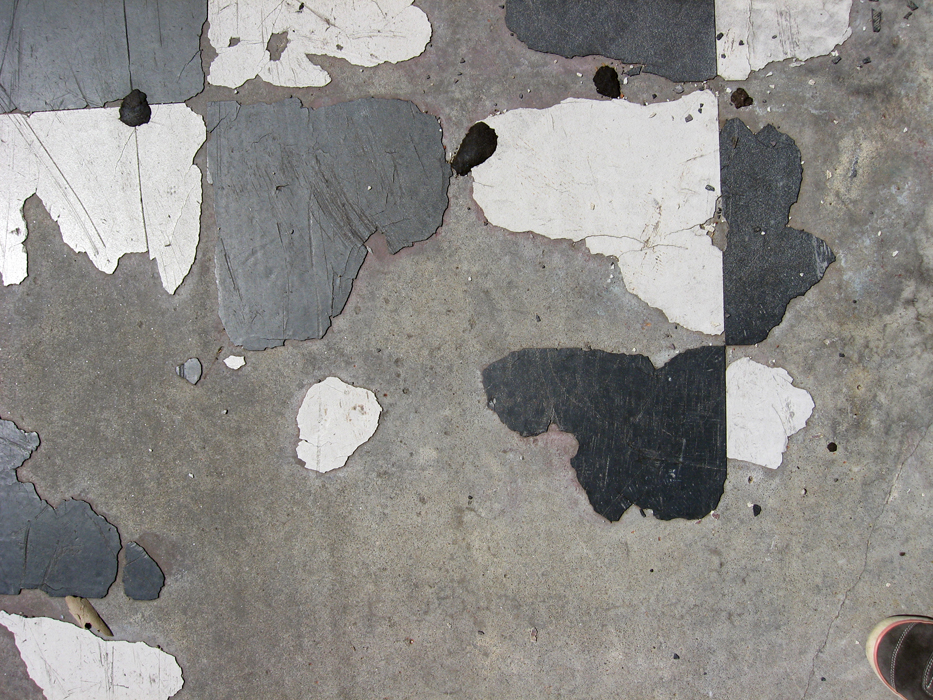
Tiles
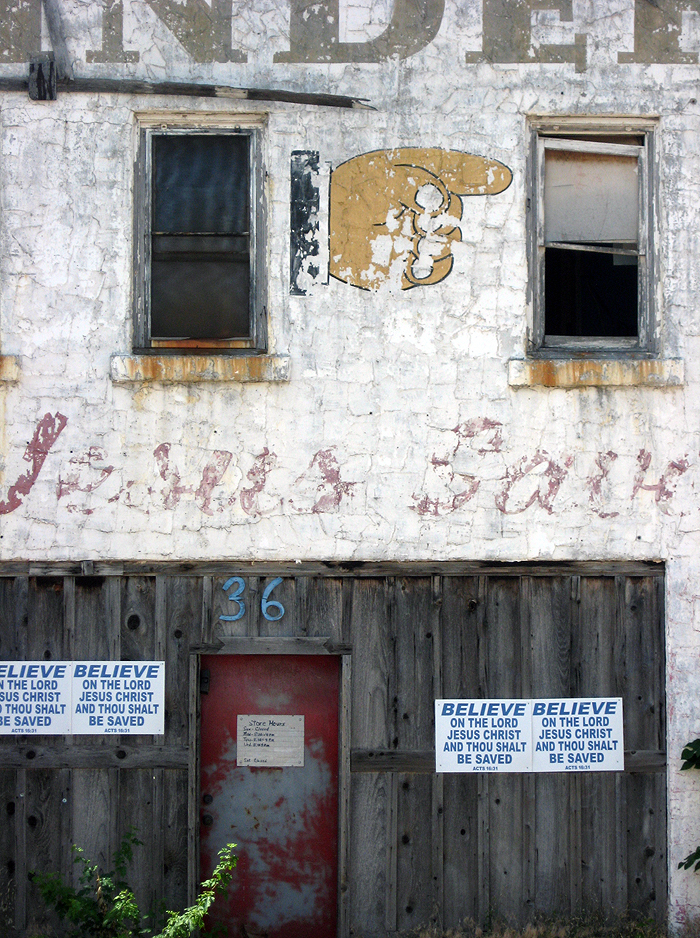
Jesus Saves Bindery I
Normal, OK: Edmond "Mundy" Tulsa

Pencil underdrawing of Young Mundy Tulsa. Click any image to see larger.
Edmond "Mundy" Tulsa was born to a man who was hoping for a boy. Everyone calls her Mundy. She is a prodigious baker, and wins many bake-offs and Opteemah County Fair ribbons.
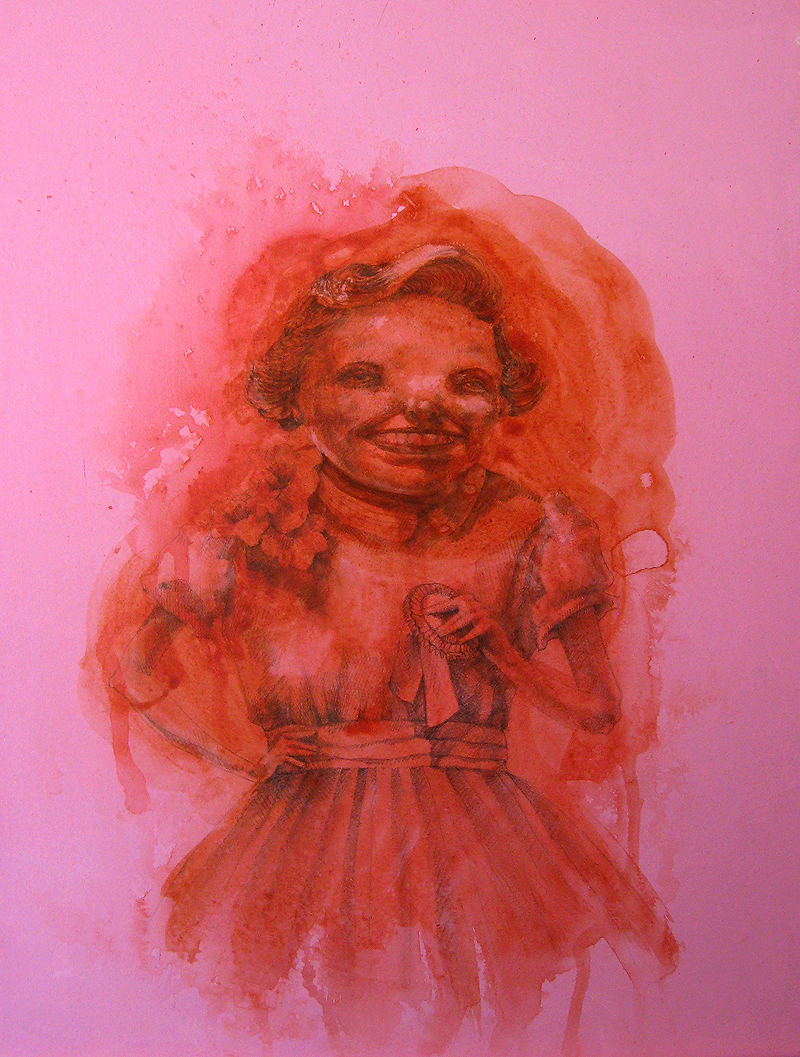
Young Mundy Tulsa, first underpainting.
The Tulsa family's money went down with Penn Square Bank when the bottom dropped out. But Grampa Dewright Tulsa had placed gold and silver coins inside sections of pipe and buried them in the backyard. One day Mundy undertakes to dig a vegetable garden and discovers the coins. This becomes the startup capital for Miz Mundy Cookies, and later Mundy Buns.
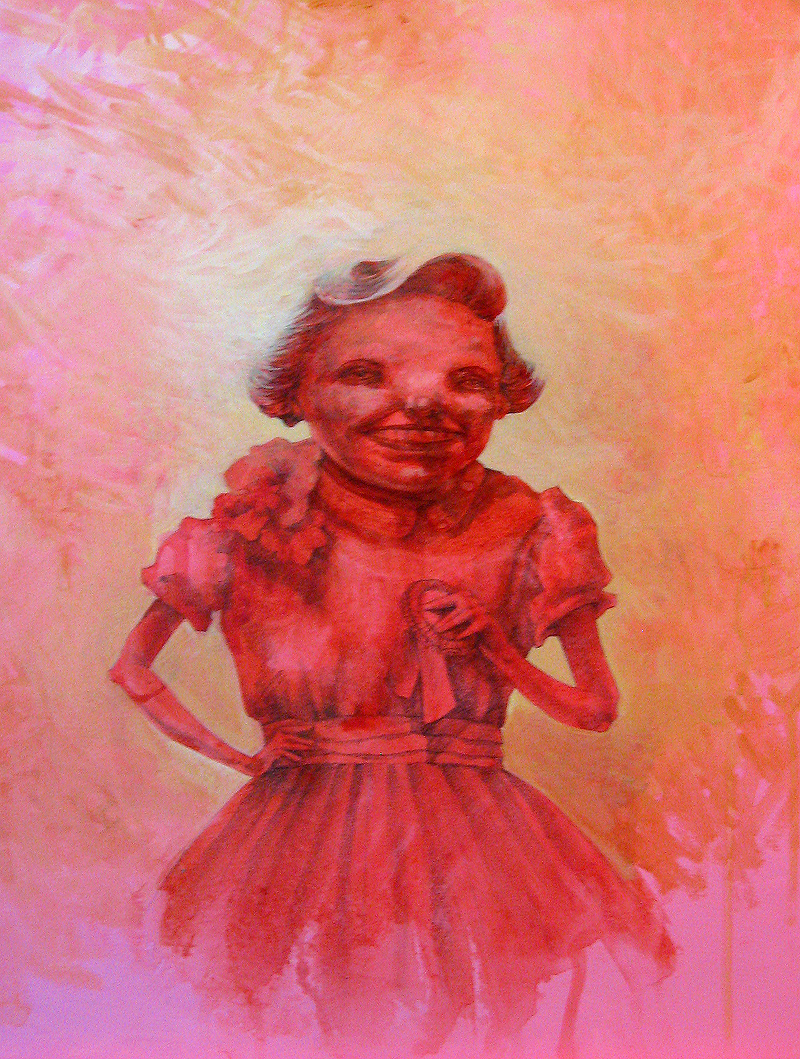
Young Mundy Tulsa, second underpainting.
Mundy Buns grows so successful that Mundy gets a buyout offer from Nabisco. She declines on account of her personal integrity. Soon after, she strikes a deal with Dobbin Wynn to be the exclusive concessions distributor for the Dobbin & Dixie Family Film Fest.
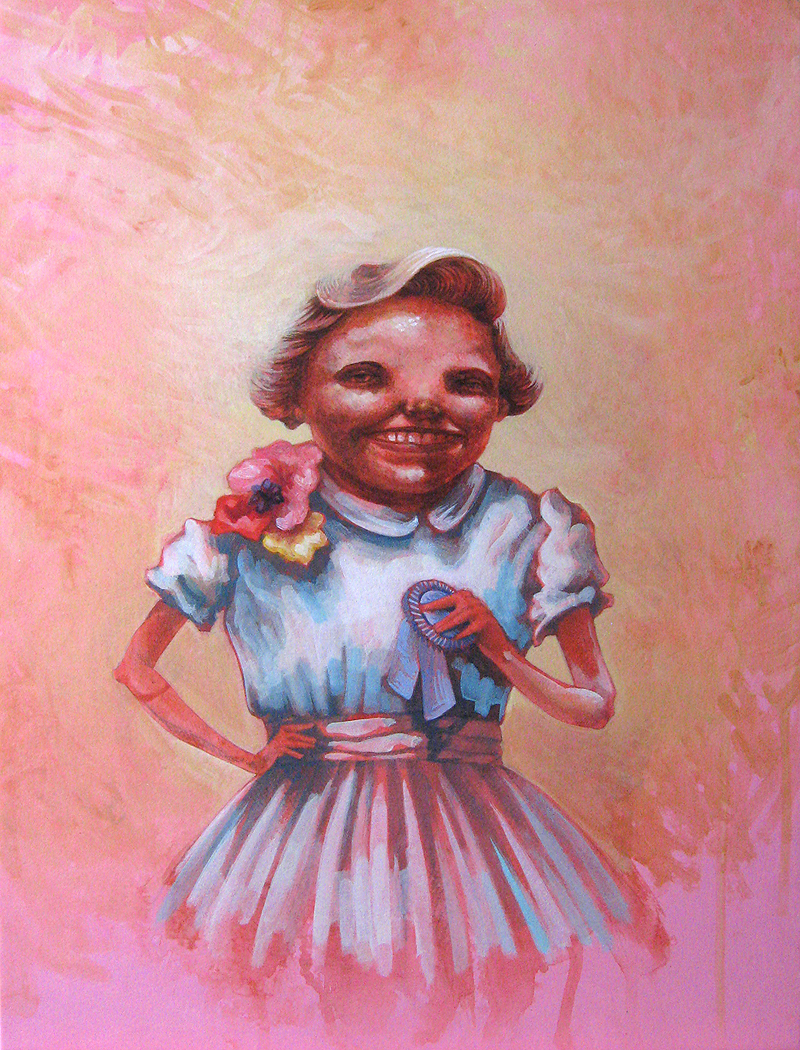
Young Mundy Tulsa, third underpainting.
The Mundy Buns plant remains the economic heart of Normal. Mundy hires Katie Hennepin to help her branch out into organic baked goods.

Normal, OK: Young Mundy Tulsa, graphite and acrylic on paper, 2009
Mundy is seen here at the Opteemah County Fair in 1944, with the blue ribbon she won for her Sweet 'n' Spicy Blackberry Pie.
Back To Normal: Normal, OK Revisited is on display at the Gaylord-Pickens Museum in Oklahoma City through September 19th.
I would like to thank everyone who attended my talk at the show last Saturday, I had a wonderful time. Please join us for the closing reception on Thursday, September 10th, 2009 at 5 pm.
Found on Flickr: Okinawa Soba and Old Japan

Geisha From Another World, vintage photograph posted by Flickr user Okinawa Soba. Click image to view source.
Flickr user Okinawa Soba has shared with us a vast archive of antique photographs, mostly of old Japan. If you have a couple of free hours, explore sets such as Geisha and Maiko, Religion in Old Japan, or Foot Binding in Old China.* (Caution -- some of these photographs contain nudity or are otherwise NSFW. Flickr will give you the option of viewing these, or not.) These photos are licensed under Creative Commons.

An Early Meiji-era Geisha Hair Style, vintage photograph posted by Flickr user Okinawa Soba. Click image to view source.
Okinawa Soba himself is quite a character, as you'll see from his humorous (though very informative) photo captions. (Many commenters provide additional information about the subjects photographed.) Read his full profile here.
Interestingly, there is a photo of Evelyn Nesbit (the "original supermodel" and inspiration for the Gibson Girl) posing as a geisha among this collection. OS thoughtfully provides a link to other Flickr images of Ms. Nesbit. We can see why she was such a big hit.
* If you're interested in the history of footbinding in China, I recommend Splendid Slippers: A Thousand Years of an Erotic Tradition
See what else I've Found on Flickr.
This post is part of NaBloPoMo for July 2009.
My Inventory Card System

Here's an example of my inventory card system. Click the image to see full-size, or click here to download a 1-page PDF version.
I keep my complete inventory in a stack of 3x5" index cards. When it comes time for a show, I make inventories for the gallery in spreadsheet form, and also in a document with thumbnail images.
Paper and pen are my preferred medium for most applications, but if you'd rather create a digital database of your work, try the GYST company.
Too many index cards cluttering up your desk drawer? Try putting them together into a Hipster.
Andy Mattern, Photographer: Interview
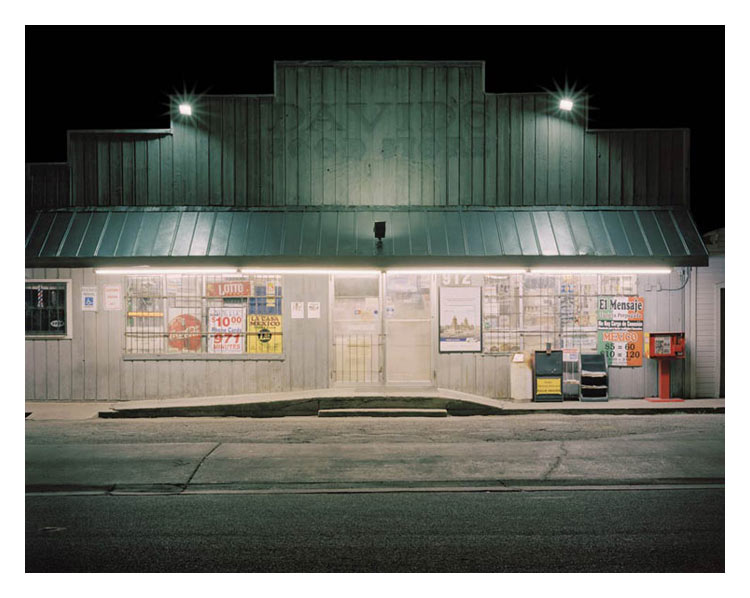
David's Food Store, 2005 photograph by Andy Mattern. Click here to see more images like this.
Andy Mattern is a photographer currently living in Minneapolis. His starkly composed images capture ordinary spaces of our lives as though human presence has been removed. In his work we feel absence and presence with equal weight.
I first met Andy when we went to high school together in Albuquerque, NM. I thought I'd check in and see what he's up to artistically these days.
SA: What kind of camera(s) are you currently using? Traditional film or digital?
AM: For the past few years, I have mainly worked with digital cameras, but I keep a 4x5 and a film cooler on hand just in case. The process of shooting digitally is frenetic and cerebral. I savor that speed and control, but I appreciate the meditative process of large format film, it's like a dream in slow motion. Part of the allure of photography is that there are all these choices of ways in which to work. It's easy to fetishize one method, but each has its benefits and, thankfully, it's not necessary to pick only one.
SA: Your technique is very formal. Is your composition entirely in-camera? Do you do any digital augmentation?
AM: I am not against cropping when necessary, but generally I compose in-camera. I spend a lot of time inspecting the edges and considering the frame as a whole before making a picture. Afterwards, if I notice something in the frame that shouldn't be there, I will remove or replace it. Working on a tripod and making numerous exposures lets me easily edit later.
SA: Why does formalism appeal to you over other techniques?
AM: Photography is an organizing tool for me. I use the camera to collect and consolidate my immediate environment into visual containers. I am not inclined to make abstract pictures because I am preoccupied with looking precisely at what is before me.
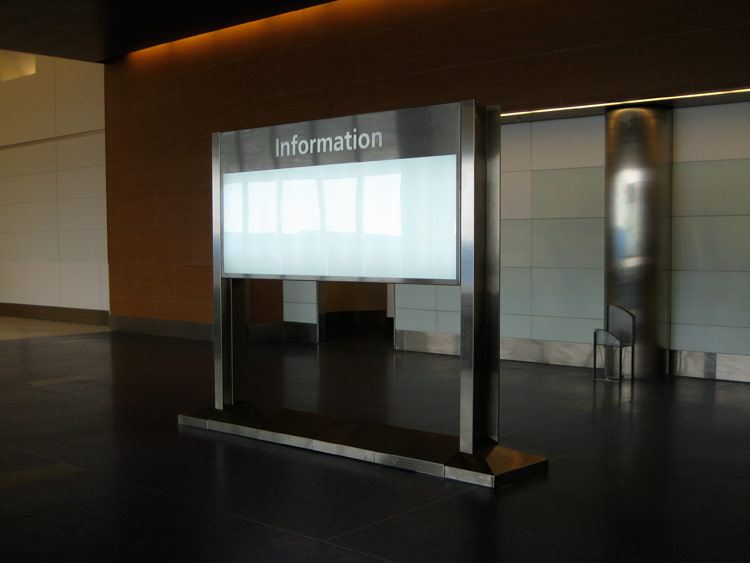
Information, 2009 photograph by Andy Mattern. Click here to see more images like this.
SA: How did you become an architectural photographer? Do you continue to do this as a business?
AM: I had been photographing buildings at night in Austin as a way to explore the new city for a few years when a photographer friend of mine referred me to an architect who needed a dusk shot of a new residence. I did the job and ended up getting more work by referral. In the lead up to graduate school, though, I have slowly tapered off my work. For the next three years I intend to focus my efforts on creative projects and teaching.
SA: What role has art played in your daily life in recent years?
AM: I am constantly stopping whatever I'm doing to make a picture. Whether it's with my tiny point-and-shoot camera, which I keep with me, or with one of my more official cameras, I get distracted by things I see and I can't relax until I photograph them.
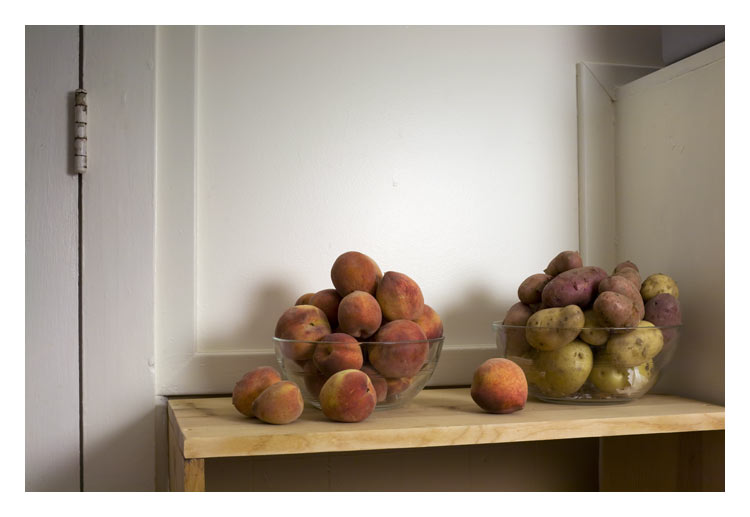
Peaches and Potatoes, 2008 photograph by Andy Mattern. Click here to see more images like this.
SA: The Leland St. series is photographs of your home (I presume). These photographs are less formal than much of your other work, yet they retain a detached, impersonal feel. What was the impetus for this series?
AM: A former professor of mine once said that if you are really good, you never have leave home to make pictures. Maybe Leland St. is an attempt to exercise that idea. As in my other series, I prefer to look directly at my subjects without distortion or visual inflection. I think it's interesting to take a step back and remove the actor from the scene in order to focus on the character of the place and provide room for new narratives to emerge. In the case of photographing my own space, a found a tension between this clinical way of seeing and depicting personal objects like toiletries and dishes. When I review these pictures, they appear to me like crime scene photographs or continuity images from a film set.
SA: You have just moved to Minneapolis. What will you be doing there?
AM: I am starting the MFA program at the University of Minnesota this fall.
SA: What are some of your current influences?
AM: I really like these books right now:
An American Index of the Hidden and Unfamiliar


I'm also taken with these artists: Cara Phillips Michael Vahrenwald Myoung Ho Lee Jake Rowland Dan Boardman
SA: Where can we see your work?
AM: I am always updating my website. But to see physical prints, please visit Stephen Clark Gallery in Austin, Texas. Also, I have a show coming up in Houston this November at the Lawndale Art Center.
---
This post is part of NaBloPoMo for July 2009.

